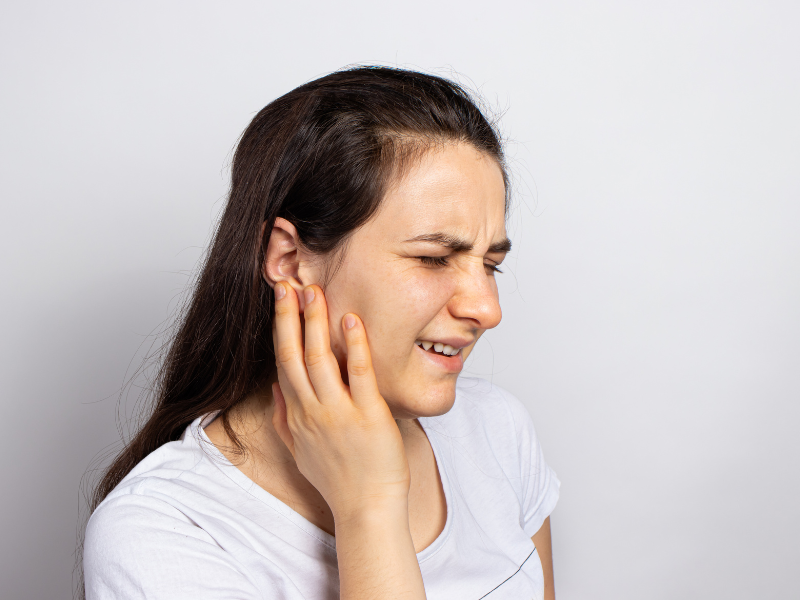


Should you sleep on the side of a ruptured eardrum? When it comes to specific health conditions, such as a ruptured eardrum, you may find yourself wondering about the best sleeping position to promote healing and avoid discomfort.
In this article, we will explore whether it is advisable to sleep on the side of a ruptured eardrum, providing insights into the considerations and best practices. So, let’s dive in!
Sleeping in a position that promotes ear drainage can help alleviate discomfort and aid in the healing process. While sleeping on the side opposite to the ruptured eardrum may seem intuitive, it is crucial to consider individual factors and preferences. Here are some tips to help you sleep in a way that promotes ear drainage:
Remember, everyone’s situation is unique, and it is essential to listen to your body and adjust your sleeping position accordingly. If you experience discomfort or have concerns, consult with a healthcare professional for personalized advice.
Before delving into the topic of sleeping positions, it’s important to understand the healing process of a ruptured eardrum. Typically, small perforations can heal on their own within a few weeks, while larger or persistent ruptures may require medical intervention. The healing time can vary depending on the severity of the injury and the individual’s overall health.
A ruptured eardrum, also known as a tympanic membrane perforation, can happen due to various reasons. One common cause is ear infections, where the build-up of pressure from fluid behind the eardrum can lead to a tear. Inserting objects into the ear, like cotton swabs, can also accidentally puncture the eardrum. Changes in air pressure, such as during air travel or scuba diving, can contribute to eardrum ruptures.
Additionally, exposure to loud noises or a sudden blast can cause injury and result in a perforated eardrum. It’s important to seek medical attention if you suspect a ruptured eardrum, as proper care and treatment are necessary for healing and preventing complications.

A ruptured eardrum, also known as a perforated eardrum, can cause several noticeable symptoms. You might experience sudden ear pain, which can be sharp or intense, and there could be drainage from the ear that may include blood or pus. Hearing loss in the affected ear is common, and you may notice ringing or buzzing sounds, known as tinnitus.
Some people might feel dizzy or off-balance due to the disruption in the ear’s normal function. If you suspect a ruptured eardrum and notice these symptoms, it’s crucial to seek medical attention promptly for proper diagnosis and appropriate treatment.
When you have a perforated eardrum, it is crucial to protect your ear from any potential harm or complications. One common concern is getting water in the ear. If water enters the perforated eardrum, it can cause discomfort and increase the risk of infection. It is generally advisable to avoid getting water in the ear until the eardrum has healed completely. This means you should avoid swimming, taking baths, or showering without proper ear protection.
The duration of a leaking ruptured eardrum can vary depending on the severity of the rupture and individual factors. In most cases, a ruptured eardrum will leak fluid for a few days to a couple of weeks. However, larger perforations or underlying conditions may prolong the healing process and extend the duration of the leakage. It is essential to consult with a healthcare professional to monitor the healing progress and receive appropriate guidance.
Choosing the right sleeping position is crucial for individuals with a ruptured eardrum. The position can significantly impact comfort levels, pain management, and the healing process. It’s essential to adopt a sleeping position that minimizes pressure on the affected ear and promotes optimal blood circulation.

When deciding on the appropriate sleeping position, there are several factors to consider:
a. Severity of the Ruptured Eardrum
The severity of the rupture can influence the choice of sleeping position. If the injury is mild and close to healing, you may have more flexibility in choosing a comfortable sleeping position. However, in cases of a significant rupture or ongoing symptoms, caution is necessary.
b. Pain and Discomfort Levels
Individuals with a ruptured eardrum often experience pain and discomfort. It’s important to find a sleeping position that minimizes these sensations and supports the healing process.
c. Individual Preferences
Personal preferences also play a role in choosing a sleeping position. Some individuals find it more comfortable to sleep on their side, while others may prefer sleeping on their back or stomach.
Sleeping on the side can have both advantages and disadvantages for individuals with a ruptured eardrum. Let’s explore them:
Pros of Sleeping on the Side
Cons of Sleeping on the Side
If sleeping on the side proves to be uncomfortable or poses risks for further injury, alternative sleeping positions can be considered. Here are a few options:
a. Sleeping on the Back
Sleeping on your back with a ruptured eardrum can help distribute your body weight evenly and minimize pressure on the affected ear. Placing a soft pillow under your head and neck can provide additional support and enhance comfort.
b. Sleeping on the Stomach
Sleeping on your stomach may not be the most recommended position for a ruptured eardrum. However, if you find it comfortable and can ensure that no pressure is applied to the affected ear, it might be an option worth exploring. Use a soft pillow or no pillow at all to maintain alignment with your spine.
c. Semi-Upright Position
For some individuals, sleeping in a semi-upright position, supported by pillows or an adjustable bed, can alleviate discomfort and reduce pressure on the ear. This position promotes proper drainage and can be particularly helpful if you experience symptoms such as ear congestion.
Regardless of the sleeping position you choose, here are some general tips to ensure a comfortable sleep with a ruptured eardrum:
When dealing with a ruptured eardrum, it is essential to prioritize your comfort and aid the healing process. While there is no one-size-fits-all answer to whether you should sleep on the side of a ruptured eardrum, considering factors such as fluid drainage, personal comfort, and medical advice can help you make an informed decision. Remember to consult with a healthcare professional for personalized guidance based on the severity of your condition and individual needs. Take care of your ears and prioritize your well-being.